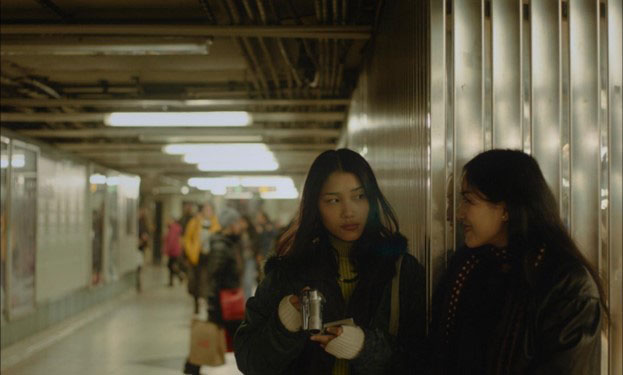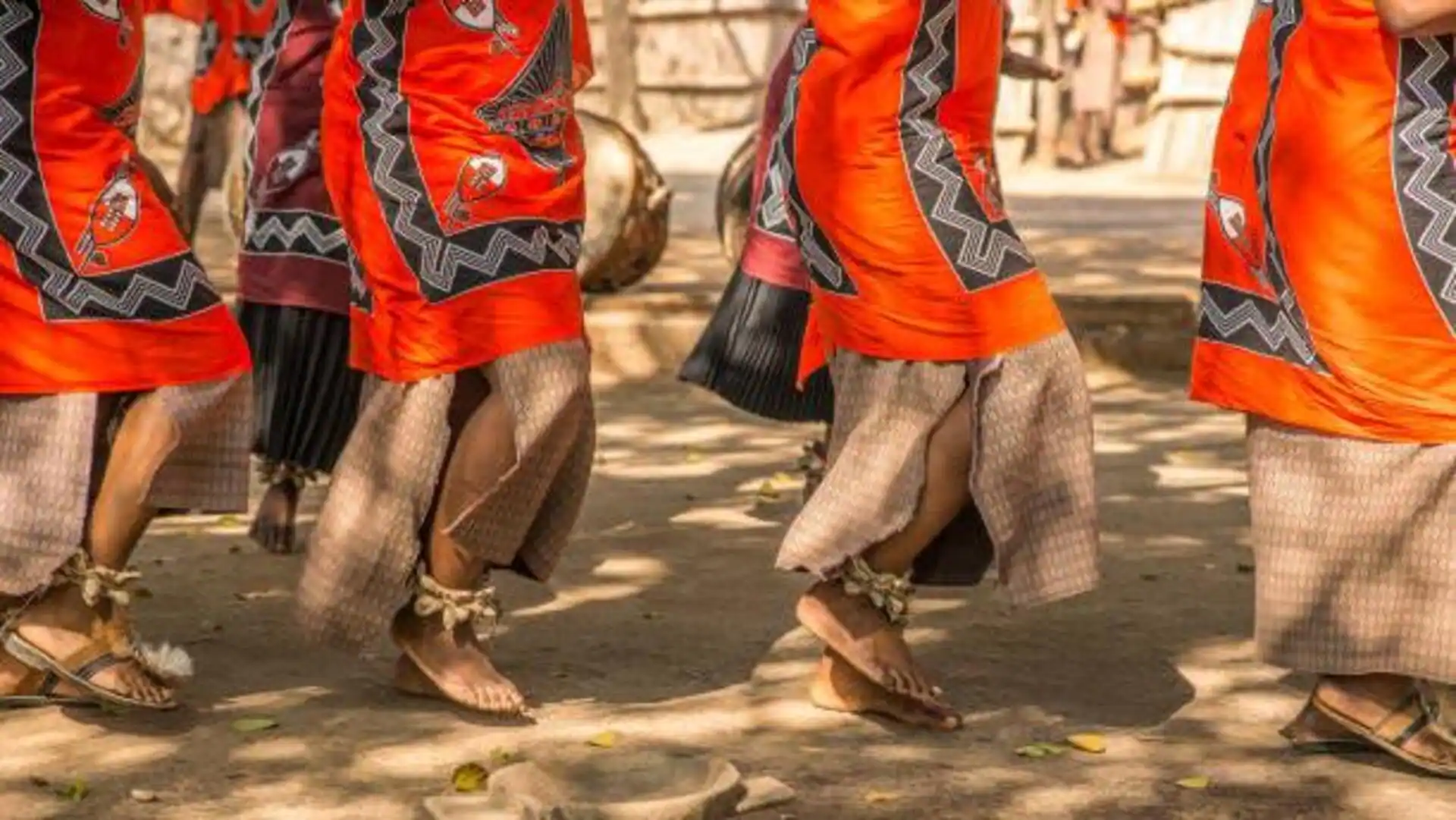Dispatch from TIFF 2025: Places and identity ‘Blood Lines’, ‘Aki’, ‘The Seasons’ and ‘100 Sunset’
By Andrew Kendall
Copyright stabroeknews

Place and identity emerge as compelling strands of several films playing at TIFF this year. Whether through the lens of documentarians, or in fictional works considering characters immersed in their home communities, a consideration of setting felt as urgent as an uncovering of theme in this quartet of films. Each filmmaker, all women, steeps her work in a pressing consideration of the dynamics of what a place might mean for the people in it, and what a sincere presentation of that place can do for the audiences watching it. Whether in the familial crises in Gail Maurice’s “Blood Lines”, the dynamic landscapes of Darlene Naponse’s “Aki” and Maureen Fazendeiro’s “The Seasons”, or the tension-filled apartments of Kunsang Kyirong’s “100 Sunset”, place was at the centre of character and meaning in these films in ways that felt reflective of these filmmakers’ preoccupations.
Dana Solomon and Derica Lafrance in “Blood Lines” (Image courtesy of TIFF)
In “Blood Lines”, Métis filmmaker Gail Maurice’s love for the Métis community of Canada (mixed ancestry people who identify as Indigenous) is clear in the lingering shots of the natural landscape. Cinematographer Steve Cosens finds tender beauty in the shots of the sky, the water, and the land, which the characters so often engage with in “Blood Lines”, a tale of family and love. Maurice’s eclectic debut film “Rosie” premiered at TIFF in 2022, an irreverent and ambitious queer film that mixed the plight of orphaned Indigenous children with the communal support of the queer community. Her follow-up feature, “Blood Lines”, which had its world premiere at the festival this week, continues her dual interest in queerness and indigeneity.
Instead of the brassy comedic tone of that film, “Blood Lines” is more meditative and restrained. The film is anchored by Beatrice (Dana Solomon), a storyteller and store clerk, whose fledgling romance with Chani (Derica Lafrance), a new woman in the community, is interrupted by the return of her estranged mother Léonore (played by Maurice). Beatrice has built up strong resentments for Léonore, whose drunkenness during her childhood left her feeling abandoned. As the community prepares for an upcoming Métis Day festival, the two threads clash with long-lasting effects.
Although less overtly ambitious than “Rosie”, one recognises in “Blood Lines” a filmmaker working to deepen their craft through an emotional throughline that prioritises sensitivity and redemption. The dialogue, moving between English and Michif (spoken by just over 1,000 people around the world) adds a note of ethnographic value to the proceedings, but too much of “Blood Lines” feels less urgent in action than the dramatic tensions that its story demands. Its handle on landscape and image is impressive; its handle on human interaction and chemistry is less so. Solomon’s performance is too tentative in the role of the lead. She is earnest in her disposition, but too often disconnected from the emotional weight the film requires of her. Her chemistry with Lafrance, which should account for a major emotional fulcrum of the film, feels too half-hearted and compromises the emotional thread the film needs so badly. Maurice directs herself without an air of self-consciousness and is effective in her silences, but the script too often leaves the mother/daughter duo reciting words that handle the sensitivity of their dynamic with too much triteness.
“Blood Lines” is better in moments on the periphery where we can catch a glimpse of the Métis culture, like a dancing scene at the festival with Maurice, or watch the older Métis women interact with each other as an ad hoc council of elders for Beatrice. Such moments, like the cultural dynamics of dance and music, or strolls through the field, or just a huddle of women in a store gossiping, feel lived-in and crucial and suggest a documentarian’s eye. Maurice clearly has genuine care and appreciation for the cultural dynamics here, and one imagines that a nonfiction approach to these stories might offer her a sharper path for deploying these skills. Further, her skills as a performer feel valuable enough that I yearned for a character of someone like Léonore whose plight is affecting, even the film falters. As it is, “Blood Lines” feels too often tedious when the stakes of its drama should feel more fulsome. Still, I left the film appreciative of what so clearly feels like a personal work of meaning for Maurice even amidst my disappointment with the film. Even when its dramatic value falls flat, “Blood Lines” feels important for its mere existence – a document of Michif as its number of speakers dwindle.
Darlene Naponse’s “Aki” is another entry at TIFF from an Indigenous Canadian filmmaker this year. The film is a picturesque and imagistic journey through the seasons shot in Atikameksheng Anishnawbek (formerly known as Whitefish Lake First Nation) in Northern Ontario. With almost no dialogue, “Aki” is a cinematic account of land and nature that asks audiences to surrender to its images and sounds in an appreciation of the steady march of time.
A scene of winter in “Aki” (Image courtesy of TIFF)
Like Maurice in “Blood Lines”, one immediately recognises the personal relationship with place that Naponse has. “Aki” might be wordless, but it is not soundless. Winds howl, animal sounds loom in the distance on the ground, birds sing overhead. This is a careful and intentional construction of place, and it is as if “Aki” is its own personal world, asking audiences to step into the rhythms of this place and luxuriate in it.
There’s a sharp political imperative in the way the camera lingers on the acts of the community. Whether fishing, or hunting, producing maple syrup or cavorting during a game of sports the camera is always at a remove as if asking us to allow this community the space to exist on their own. It is a choice that cuts through any need for contextualisation in the film. There are no talking heads to explain things, and instead the film asks the audience to immerse themselves in it and investigate the context thereafter. There’s a defiance in this approach that climaxes with a sequence titled ‘Azhigwa’ meaning (at this time) that takes us overhead to see shots of construction and factories that are encroaching on the land. It feels important that “Aki” does not ground its observation in this, though, but keeps on returning to the dynamics of the community and the natural world.
One can sense that the specificity of choice of places, and the tone of the camera’s movement through this place, is one borne out of knowledge and deep personal connection. We remain on the outside watching, but “Aki” does not consider this place with austere remove or a filmmaker’s attempt at distance as a way of showing objectivity. Instead, it is a film born out of deep empathy for its surroundings.
From Northern Ontario we move to the south of Portugal to the Alentejo region where empathy abounds just as much in “Aki”. Filmmaker Maureen Fazendeiro, in her solo directorial debut, creates a vivid presentation of the region’s beauty and history in a meditative docufiction film. “The Seasons” presents us with sprawling tableaus of nature, piecing together the history and context of this place that was once a major tourist destination.
A scene from “The Seasons” (Image courtesy of TIFF)
Cinematographers Robin Fresson and Marta Simões do some of the most beautiful photography of the festival, finding depth and nuance in moments that might seem incidental, casting an empathetic and thoughtful gaze on the contours of this place. But this is not just beauty, it’s also about history and place and ownership.
“The Seasons” utilises diary entries from Georg and Vera Leisner, German archaeologists who happened to be in the region at the onset of World War II, as frames for the early sections of the story. And there is an archaeological element in “The Seasons”. As the film considers the farmers and residents of the community who were critical facilitators in finding artefacts in the past, the value of research is profound. But “The Seasons” has its mind on the sites and artefacts as well as the people. If archaeology sounds too cold, “The Seasons” feels at once warmer and more individual than that. Several scenes in the middle reflect the political memory of the residents, as a sustained song from an elderly woman celebrates the rejection of fascism and the plight of farmers. Moments like these reaffirm the profound weight of a work like this, offering cinematic space to regions and peoples whose stories tend to remain on the periphery.
Fazendeiro’s approach melds the picturesque survey of this place with more unsettling and tragic remnants of the past. So, we spend time with bleating herds of goats, who in a moment of sharp reflexivity seem to be gazing out at us just as we gaze at them. In other scenes, we follow a re-enactment of local hero Charro’s burial, a defiant historical figure of the community who was killed by the powerful. Sometimes the interplay between the soft winsomeness of nature and the more fraught political realities is jarring but within the nuances of “The Seasons” I recognised Fazendeiro’s own playfulness in engaging with materiality – the reconstruction and recreations of the past, the weight of memory, the temporal clashes.
Seeing this a few days after “Aki”, I found myself thinking about the state of the contemporary documentary. So many newer documentarians have sought to employ their visual styles for poetic essay films that survey a place. These kinds of ethnographic accounts can sometimes be lost in a carousel of festival entries, but to think of the ambitiousness of the tableaus in “The Seasons” Fazendeiro’s choices emerge as the work of a filmmaker deliberately asking the audience to sit with, and contextualise, our own approaches to the many things presented in these tableaus. The sharp element of humaneness, joined by a complex willingness to let images wash over us, feels like a profound contribution to the unexplored places of these films. Place is subject, not object, and the way the wind blows through the leaves of a tree becomes an act of meaningfulness.
And “100 Sunset”, the feature debut from Canadian filmmaker Kunsang Kyirong, is thinking of the meaning of place in its own way “100 Sunset” is sometimes a teasing character study of its teenage protagonist or is, at other times, a sprawling glance at the social milieu of a community stuck in its ways. Its awareness of space and place (the title is an address) has lingered in my head even as I’m uncertain what to fully make of its ambivalences and swerves. Kunsel (Tenzin Kunsel), an aloof teenager, partakes in petty thievery among her neighbourhood Tibetan immigrants in Toronto. Armed with her camcorder, one of her stolen items, she ventures outdoors to survey her neighbourhood. She has brokered a tentative friendship with Passang (Sonam Choekyi), a new neighbour with an older husband who seems to have secrets of her own.
Tenzin Kunsel and Sonam Choekyi in “100 Sunset” Image: Courtesy of TIFF
But the secrets of the women are embedded in the texture of their surroundings. The smokiness of the bars, the stultified air of the apartments, those streets and walkways the women walk through. There’s a lingering sense of people desperate to break out from the limits of their confinement. To do what? The film leaves us to query. Kunsel attends school for English, although she rarely gets to use it, but the school becomes another place that feeds into the themes and tensions.
At language class, a translated sentence lands with weightiness. “If I found some money, I’d keep it.” And money is very important in “100 Sunset”. Dhikuti, a rotating communal credit system where individual participants receive monthly pay-outs from a group pot, is a key part of the film. The line is a clever in-joke both to that money and our awareness of Kunsel’s own habit of stealing but within I find a more pressing awareness of the wanting for self and characters searching. These are people desperate to find something of their own to keep. And it’s that idea of seeking that becomes so key to “100 Sunset”, so many scenes dependent on characters watching, being watched or avoiding being watched.
It makes sense that it is the restlessness of Kunsel that first takes us out of the constructed Tibetan space that the community spends time in. “100 Sunset” presents an image of Toronto buoyed by a double removal – Kunsel’s distance from her home country, and then her further isolation within her community at home. The yearning for freedom becomes essential to the way the relationship between the two women develops, and the complicated resolutions of where it goes. The patriarchal hold of men looms over the entire film, as the film in the community scenes needles at the complex gender dynamics of the people around Kunsel. The camcorder emphasises the observatory role of her within this space, her intentional silences and watchfulness part of curiosity and ambivalence at the world around. The dishevelled ambiguity of its end might frustrate but within that frustration is its own reminder: these characters are still searching for something of their own. Sometimes, where you are is the place you really don’t want to be.



